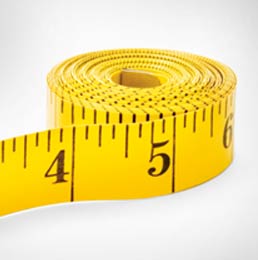
Gaining weight puts a lot of extra stress and strain on your knees, which must bear the brunt of those excess pounds. The added pressure increases wear and tear, contributing to osteoarthritis. On the flip side, losing weight can help you take a load off, literally. One study (Arthritis and Rheumatism, July 2005) found that every lost pound subtracts four pounds of pressure from the knees for each step taken. In practical terms, losing just 10 pounds means that each knee is subjected to 48,000 fewer pounds of pressure for every mile walked.
The implication: Even a fairly small weight loss can make a big difference for overweight people with knee osteoarthritis. Two other studies bear out this assumption.
Study 1. The larger of the studies was the Arthritis, Diet, and Activity Promotion Trial (ADAPT; Arthritis and Rheumatism, May 2004), conducted by researchers at Wake Forest University. It included 316 adults ages 60 and older who were overweight and had knee osteoarthritis. These individuals were randomly assigned to either a treatment group (diet, exercise or diet-plus-exercise) or a control group that simply got general information about a healthy lifestyle.
The best results were achieved by those in the diet-plus-exercise group, who lost about 6 percent of their body weight over an 18-month period. For someone starting out at 200 pounds, that would mean losing just 12 pounds over the course of a year and a half. This modest weight loss combined with moderate exercise led to the greatest overall improvements in pain, physical function and the ability to get around.
Study 2. Results from a second study, conducted by researchers at Johns Hopkins University, were reported at the 2006 annual meeting of the American College of Rheumatology. This study included 30 overweight adults with knee osteoarthritis who took part in a weight loss program. The program consisted of 16 weekly classes on diet, exercise and lifestyle change. After the classes ended, the group got back together every three months for a year to talk about keeping the weight off.
At the end of the 16-week class period, participants had lost an average of 15 pounds. They regained some of that weight over the next year, but they kept off more than half of it, on average. Weight loss was associated with lasting reductions in pain. And a positive cycle seemed to ensue. Decreased pain, in turn, was associated with better weight maintenance, probably because being in less pain made it easier to stay motivated and active.
To lose weight, you need to take in fewer calories through food than you burn off by exercise. You can do that by eating less or exercising more — but the best results are often achieved with a combination of both. Since a pound of fat is about 3,500 calories, you can lose that amount in a week by aiming for a deficit of 500 calories a day. For instance, you might aim to burn an extra 200 calories through exercise and cut another 300 calories from your diet.
If you’re overweight, dropping a few excess pounds can reduce the wear and tear on your knees. Beyond that, losing just 5 percent to 10 percent of your body weight can lower your odds of developing heart disease or having a stroke. And when combined with exercising at a moderate level of effort for 30 minutes a day, 5 days a week, it can help prevent or delay the onset of type 2 diabetes. So lose a few pounds, and you may gain better health.
PLEASE NOTE: The studies and their findings that are presented in this article are for informational purposes only and are not meant to take the place of the advice of your doctor. By providing you with this information, Sanofi is not endorsing its content nor does it represent that the information is necessarily appropriate for you. You should consult with your doctor before starting any new health or exercise regimen.
References“Osteoarthritis: What causes it?” Arthritis Foundation. Available at: http://www.arthritis.org/disease-center.php?disease_id=32&df=causes. Accessed September 6, 2011.
“Weight Loss Reduces Knee-Joint Loads in Overweight and Obese Older Adults with Knee Osteoarthritis.” S.P. Messier et al. Arthritis and Rheumatism. July 2005, vol. 52, no. 7, pp. 2026-2032.
“Exercise and Dietary Weight Loss in Overweight and Obese Older Adults with Knee Osteoarthritis: The Arthritis, Diet, and Activity Promotion Trial.” S.P. Messier et al. Arthritis and Rheumatism. May 2004, vol. 50, no. 5, pp. 1501-1510.
“Nutrition for Weight Loss: What it Takes to Lose Weight.” American Academy of Family Physicians. Available at: http://familydoctor.org/online/famdocen/home/healthy/food/improve/795.printerview.html. Accessed September 6, 2011.
“Do You Know the Health Risks of Being Overweight?” Weight-Control Information Network. Available at: http://win.niddk.nih.gov/publications/health_risks.htm. Accessed September 6, 2011.